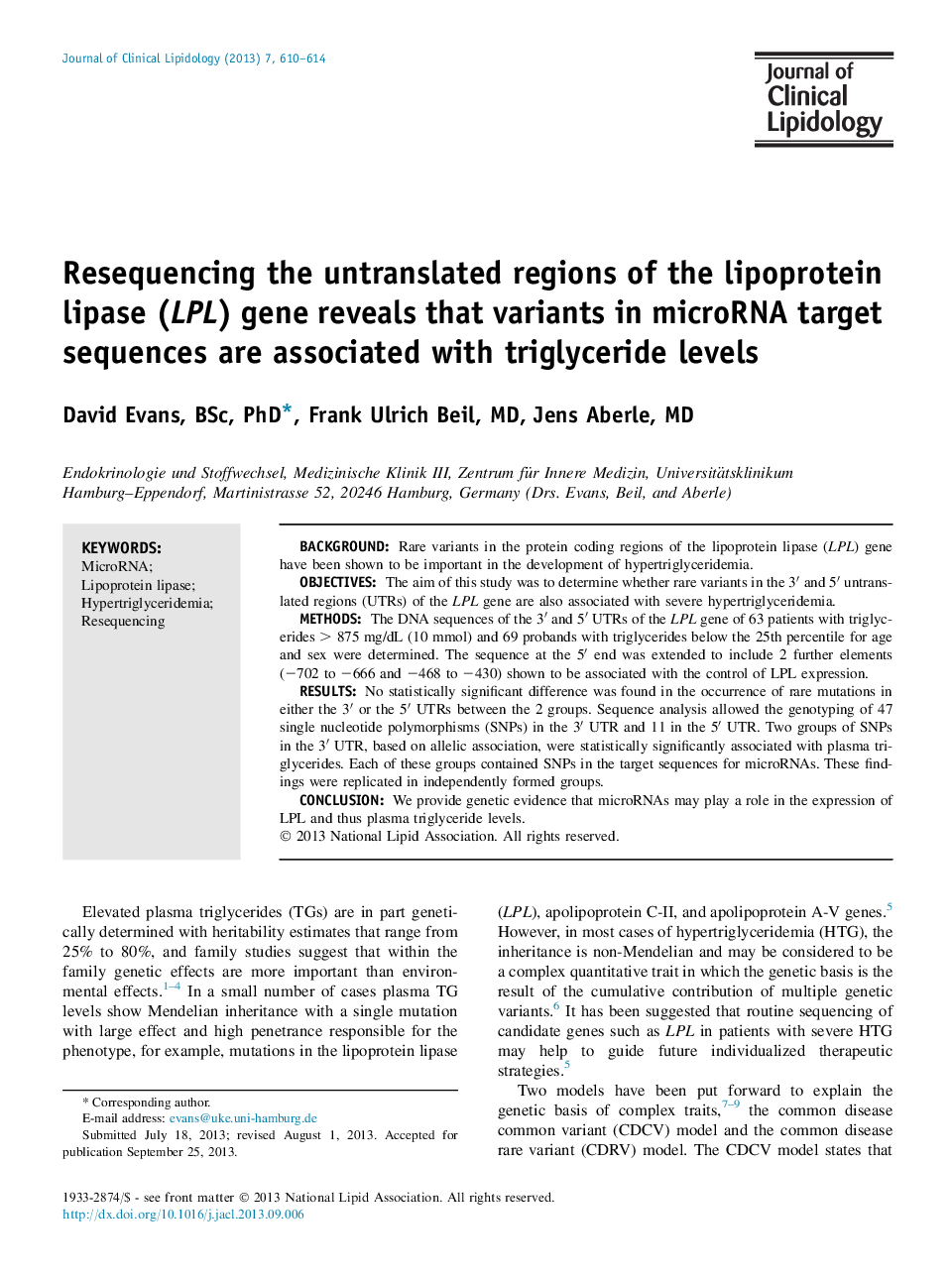| Article ID | Journal | Published Year | Pages | File Type |
|---|---|---|---|---|
| 2966183 | Journal of Clinical Lipidology | 2013 | 5 Pages |
►Untranslated regions of the LPL gene have been sequenced in patients with extreme triglyceride levels.►No difference in the frequency of variants was found between the groups.►Single nucleotide polymorphisms in target sequences for microRNAs are associated with triglycerides.
BackgroundRare variants in the protein coding regions of the lipoprotein lipase (LPL) gene have been shown to be important in the development of hypertriglyceridemia.ObjectivesThe aim of this study was to determine whether rare variants in the 3′ and 5′ untranslated regions (UTRs) of the LPL gene are also associated with severe hypertriglyceridemia.MethodsThe DNA sequences of the 3′ and 5′ UTRs of the LPL gene of 63 patients with triglycerides > 875 mg/dL (10 mmol) and 69 probands with triglycerides below the 25th percentile for age and sex were determined. The sequence at the 5′ end was extended to include 2 further elements (−702 to −666 and −468 to −430) shown to be associated with the control of LPL expression.ResultsNo statistically significant difference was found in the occurrence of rare mutations in either the 3′ or the 5′ UTRs between the 2 groups. Sequence analysis allowed the genotyping of 47 single nucleotide polymorphisms (SNPs) in the 3′ UTR and 11 in the 5′ UTR. Two groups of SNPs in the 3′ UTR, based on allelic association, were statistically significantly associated with plasma triglycerides. Each of these groups contained SNPs in the target sequences for microRNAs. These findings were replicated in independently formed groups.ConclusionWe provide genetic evidence that microRNAs may play a role in the expression of LPL and thus plasma triglyceride levels.
